 |
 |

|
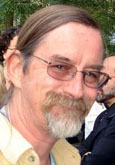 Bon voyage, Gary! Bon voyage, Gary!
TDLC Director, Gary Cottrell, and his family are on their way to France, where he will be exploring new research avenues during a year-long sabbatical. "I'm visiting my ironically-named friend, Bob French, at the Université de Bourgogne in Dijon."
During Gary's sabbatical, which runs from July 2013 through June 2014, Andrea Chiba (TDLC Science Director) will assume the role of Acting Director of TDLC. More
|

Sally Ride Science officially joins TDLC as a corporate partner
America's first woman in space, Sally Ride, founded a science education company called Sally Ride Science, to engage and inspire students in science, technology, engineering, and math (STEM) fields. The company "brings science to life through pioneering professional development, instructional solutions, and real-science investigations for students in 4th-8th grades" Bill Jenkins has moved from his position at Scientific Learning, one of TDLC's corporate partners, to a position at Sally Ride Science, and is excited about the future opportunities a partnership with TDLC can create. More 

TDLC's Terry Sejnowski Elected to American Academy of Arts and Science!
Salk researcher Terrence J. Sejnowski, professor and head of the Computational Neurobiology Laboratory, has been elected a Fellow of the American Academy of Arts and Sciences, a distinction awarded annually to global leaders in business, government, public affairs, the arts and popular culture as well as biomedical research. More 
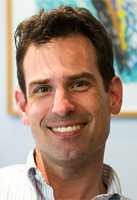
UC San Diego's "Simphony" Research Earns Grammy Foundation Support
John Iversen of the Institute of Neural Computation (INC) at UC San Diego is heading the SIMPHONY Project, one of the first longitudinal studies of its kind on the effects of musical training on brain development. SIMPHONY is being done in collaboration with TDLC researcher Dr. Terry Jernigan of the Center for Human Development. More
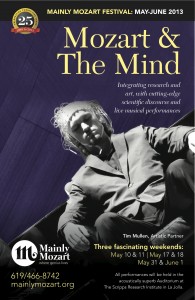
Mozart & The Mind:
TDLC Investigators Participate in a Cutting-Edge Series that explores the Music/Brain connection
TDLC investigators Scott Makeig, Tim Mullen, Alex Khalil, Victor Mincez, and John Iversen (with other scientisits and musicians) participated in the Mozart & The Mind Series -- a "unique opportunity to engage with scientists, musicians, and fellow music aficionados around a series of interactive installations exploring connections between music and the brain!" "We wanted to create a conversation," Tim Mullen explains, "…to engage a broader audience in both the appreciation of music, and its connection with brain-science."
More about the event 
Mozart & The Mind Brochure 
UC San Diego Creates Center for Brain Activity Mapping (CBAM)
 Ralph Greenspan (associate director of the Kavli Institute for Brain and Mind at UC San Diego) authored the proposal for CBAM with Nick Spitzer (Kavli Director) and TDLC's Terry Sejnowski. CBAM will focus on "developing new technologies necessary for global brain-mapping at the resolution level of single cells and the timescale of a millisecond, participate in brain mapping experiments, and develop the necessary support mechanisms for handling and analyzing the enormous datasets that such efforts will produce." Read the article Ralph Greenspan (associate director of the Kavli Institute for Brain and Mind at UC San Diego) authored the proposal for CBAM with Nick Spitzer (Kavli Director) and TDLC's Terry Sejnowski. CBAM will focus on "developing new technologies necessary for global brain-mapping at the resolution level of single cells and the timescale of a millisecond, participate in brain mapping experiments, and develop the necessary support mechanisms for handling and analyzing the enormous datasets that such efforts will produce." Read the article 
|
|

|
 Computer-Based Cognitive and Literacy Skills Training Improves Students' Writing Skills Computer-Based Cognitive and Literacy Skills Training Improves Students' Writing Skills
B. Rogowsky, P. Papamichalis, P., L. Villa, S. Heim, P. Tallal (2013)
A study conducted at Rutgers University finds that cognitive and literacy skills training (Fast ForWord Literacy and Reading Series from Scientific Learning Corporation) improves college students' basic writing skills. More

Learning to read may trigger right-left hemisphere difference for face recognition
Marlene Behrmann, Eva Dundas, David Plaut - Carnegie Mellon University
Whereas, in this study, adults showed the expected left and right visual field superiority for face and word discrimination, respectively, the young adolescents demonstrated only the right field superiority for words and no field superiority for faces. Although the children's overall accuracy was lower than that of the older groups, like the young adolescents, they exhibited a right visual field superiority for words but no field superiority for faces. Interestingly, the emergence of face lateralization was correlated with reading competence, measured on an independent standardized test, after regressing out age, quantitative reasoning scores and face discrimination accuracy.
More
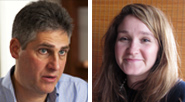 Micro-valences: perceiving affective valence in everyday objects Micro-valences: perceiving affective valence in everyday objects
Sophie Lebrecht, Moshe Bar, Lisa Feldman Barrett, and Michael J. Tarr (2013)
New research from Carnegie Mellon University's Center for the Neural Basis of Cognition (CNBC) shows that the brain's visual perception system automatically and unconsciously guides decision-making through something called valence perception. Valence — defined as “the positive or negative information automatically perceived in the majority of visual information” — is a process that allows our brains to quickly make choices between similar objects. The researchers conclude that “everyday objects carry subtle affective valences – ‘micro-valences’ – which are intrinsic to their perceptual representation.” More
TDLC researchers present at the 2013 International Brain-Computer Interface (BCI) Conference
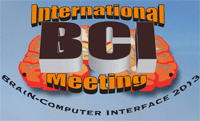 TDLC's Scott Makeig, Tim Mullen, Leanne Chukoskie, and Virginia de Sa (among others) recently attended the 2013 International Brain-Computer Interface (BCI) Conference, held on June 3-7, 2013, in Pacific Grove, CA. They were part of a group of scientists who convene annually to discuss scientific advances in the field of BCI -- a technology that links thoughts, commands and emotions from the brain to computers, using EEG. Tim Mullen won Poster Prize for Technical Merit for his poster, "Real-Time Estimation and 3D Visualization of Source Dynamics and Connectivity Using Wearable EEG". TDLC's Scott Makeig, Tim Mullen, Leanne Chukoskie, and Virginia de Sa (among others) recently attended the 2013 International Brain-Computer Interface (BCI) Conference, held on June 3-7, 2013, in Pacific Grove, CA. They were part of a group of scientists who convene annually to discuss scientific advances in the field of BCI -- a technology that links thoughts, commands and emotions from the brain to computers, using EEG. Tim Mullen won Poster Prize for Technical Merit for his poster, "Real-Time Estimation and 3D Visualization of Source Dynamics and Connectivity Using Wearable EEG".
More about TDLC's research at the conference
Conference Website 
 Mapping the Active Brain: Unlocking the Mapping the Active Brain: Unlocking the
Next Frontier – Solving the Mystery of the Human Mind
CONNECT assembled panelists (including TDLC's Terry Sejnowski and Ralph Greenspan, Associate Dir. of the Kavli Institute for Brain and Mind at UCSD (KIBM)) to discuss the BRAIN Initiative and what the project’s "enormous potential will be to the future of science, innovation and patients."
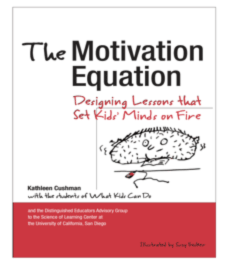 The Educator Network: School year ends on a high note The Educator Network: School year ends on a high note
The Educator Network's Distinguished Educator Advisory Panel (DEAP) ended the school year with the notice from author Kathleen Cushman that her e-book featuring members of the San Diego and Boulder DEAP and TDLC scientists will be published this month on howyouthlearn.org. A hard copy will follow in a few months. Titled The Motivation Equation, the book uses classroom lessons from six of the DEAP members and insights from TDLC scientists to help us understand more about the motivation equation and the conditions that young learners need to develop both motivation and mastery. Much of the work with author Cushman took place in the 2011-2012 school year. More
|
|
|
| |
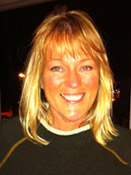 Welcome Kim Hutson de Belle! Welcome Kim Hutson de Belle!
Kim is the new TDLC Executive Director
Kim comes to us as a public and private sector management specialist with 20 years experience developing and leading organizational strategic and fiscal planning processes, interdisciplinary programs management, and regulatory and governmental affairs advocacy. Throughout her career, Kim has valued and pursued initiatives that have increased strategic alliances and collaborations, resulting in enhanced organizational development, community partnerships and fundraising.
"I am honored and delighted to be working with such a rich collection of dedicated and innovative researchers," Kim offered. "I am intrigued by the TDLC's innovative approach to the daunting task of achieving an integrated understanding of the role of time and timing in learning, across multiple temporal and spatial scales, brain systems and social structures. After seven years, the TDLC is a demonstratively successful critical link between the science of learning and the translation of temporal dynamics into improved educational practices. Public and private education advocates decry the wheels coming off the education cart in the United States, and the TDLC's collaborative networked research offers a fresh roadmap for education reform. With three years of National Science Foundation support remaining, the TDLC and its partners face the challenge of securing funding to continue these important research collaborations. This will require (1) increasing the visibility of research and translational project and program successes, and (2) developing new public and private funding partners who are committed to the formulation of emergent paradigms of learning and thus new educational models."
Before joining TDLC, Kim served as Vice President for Programs for the American Hiking Society in Washington, DC, and Deputy Executive Director for the Outside Las Vegas Foundation in Las Vegas, Nevada. In both roles, Kim managed fund development, diverse programming, community outreach, and government relations. Previously, she coordinated environmental and cultural research and regulatory processes in senior management positions at engineering firms in Nevada and Arizona, and during her tenure at the Southern Nevada Water Authority, led the capital fundraising campaign and conceptual and schematic design and programming for the Las Vegas Springs Preserve, a premier experiential sustainability, science and nature center.
Kim holds a B.A. degree in Planning, Public Policy and Management from the University of Oregon, and a M.S. degree in Water Resources Management from the University of Nevada, Las Vegas.
|
|
This message was sent from:
The Temporal Dynamics of Learning Center (TDLC.UCSD.EDU)
University of California, San Diego,
9500 Gilman Drive, La Jolla, CA 92093
To learn more about TDLC, please visit us on the web at: TDLC.UCSD.EDU
Please contact webmaster@tdlc.ucsd.edu to unsubscribe.
TDLC is a Science of Learning Center (SLC),
one of six SLCs funded by the National Science Foundation. NSF grants SBE 0542013 and SMA 1041755.
|
|
 |
 |
 July 2013 July 2013
|
|

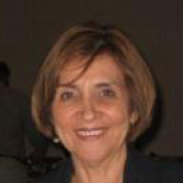
TDLC's The Educator Network
Recent
Forum Topic:
Using Spatial Thinking to Teach Science, Math and Social Studies
This article, written by one of our Science of Learning partners, Nora Newcombe, gives some great insights into what teachers can do to help students use spatial thinking especially in math, science and social studies. Click here to read the article.
|
|
|
 |
 |
The BRAIN Initiative:
A Primer
This video was commissioned by the Kavli Foundation and produced, in collaboration with Science Visualization, by The Science Network.
View the Video 
|
 |
NIH study identifies brain circuits involved in learning and decision making
(NIH, July 8, 2013)
Finding has implications for alcoholism and other patterns of addictive behavior.
More 
|
 |
Scientists Help Explain Visual System's Remarkable Ability to Recognize Complex Objects
Two studies at the Salk Institute for Biological Studies
pave the way to better computer object recognition and future therapies for visual disorders. (Neuron, June 19, 2013, and PNAS, June 24, 2013)
Read article 
|
 |
Scientists Identify Emotions Based On Brain Activity
(ScienceDaily,
June 19, 2013)
For the first time, scientists at Carnegie Mellon University have identified which emotion a person is experiencing based on brain activity.
Read article 
|
 |
Bring back PE: Exercise should be 'core' class, report says (Today Health)
"Children who are more active show greater attention, have faster cognitive processing speed, and perform better on standardized academic tests than children who are less active," the panel wrote."
Read article 
|
 |
Major health benefits of music uncovered: The neurochemistry of music (Mar. 2013)
"In the first large-scale review of 400 research papers in the neurochemistry of music," a team led by Prof. Daniel J. Levitin of McGill University's Psychology Dept. found that music improved the body's immune system function and reduced levels of stress.
Read article 
|
 |
Which Exercise Is Best For Your Brain?
(SportsGeezer)
In a recent study, published in The Journal of Aging Research, among two exercise groups (walking and lifting weights), the women who walked showed greater gains in verbal memory than the women who had lifted weights.
Read article 
|
 |
Trying to be Happier Works When Listening to Upbeat Music, According to MU Research
(Univ. of Missouri news release, May 14, 2013)
Read More
|
 |
Optimal Music for the Gym: Researchers Say The Right Tempo Boosts Stamina, Energy Efficiency (The Wall Street Journal, April 1, 2013)
Read More
|
 |
Altered Neural Circuitry May Lead to Anorexia and Bulimia(UCSD News Center, June 2013)
Read More
|

|
Distraction affects our "brain power"
In an age where new technology and advances are constantly competing for our attention -- cell phones, Twitter feeds, Facebook, e-mail -- researchers are wondering what impact these distractions have on our brains. This constant competition for our attention can have an impact on our productivity. Gloria Mark of UC Irvine found that "a typical office worker gets only 11 minutes between each interruption, while it takes an average of 25 minutes to return to the original task after an interruption."
Do these interruptions "make us dumber?
Quite a bit, according to new research by Carnegie Mellon University's Human-Computer Interaction Lab." The lab designed an experiment to measure the brain power lost when someone is interrupted. They found that both the distraction of an interruption, as well as the brain drain of preparing for that interruption, "made test takers 20 percent dumber."
On a positive note, the CMU study found that it is possible for people to train themselves for distractions, even if they don't know when the distractions will hit. More
(reference:
The New York Times) |
|
|
 |

![]()
